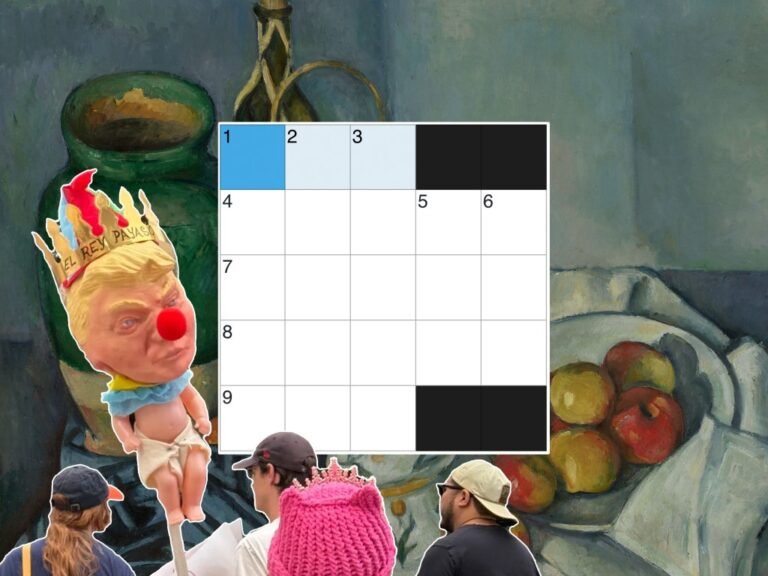

Welcome to the 281st installment of A View From the Easel, a series in which artists reflect on their workspace. This week, artists embed the forest in their prints and find comfort in the imperfections of hand-dyed wool.
Want to take part? Check out our submission guidelines and share a bit about your studio with us through this form! All mediums and workspaces are welcome, including your home studio.
Evelyn Politzer, Miami, Florida

How long have you been working in this space?
I have been working in my current studio since 2017. When I first moved in, everything was neat and with a lot of empty spaces, which have been filling up slowly but surely.
Describe an average day in your studio.
Though the specific time varies, I begin working in my studio after my morning coffee. I try to do all the boring stuff, like paying bills, before I reward myself by immersing myself in my materials. I am naturally inclined to work on many projects at once because that is how my brain works. I always joke that I am working diligently on my PhD — Projects Half-Done. Similar to how some artists doodle to find new inspiration, my ideas come to me while playing with my materials. Playful curiosity is the most conducive force for my work. I experiment with colors, textures, and remnants to develop techniques that are new to me or to alter traditional methods. Through this process, I create small “sketches” or samples which I then expand into larger works. I don’t listen to anything except the birds and wind outside my window, but I do keep an extensive library of art history and textile art reference books.
How does the space affect your work?
I am lucky to have a large workspace, especially in relation to my previous studio. This increase in size is reflected in the size of my artworks, as their scale expanded alongside the studio’s. There is a subtropical garden outside which can be seen through my large windows and glass doors. The giant mango trees have inspired an outdoor series called Tree Huggers, and the branches, vines, and birdsongs have inspired my Nesting series.
How do you interact with the environment outside your studio?
When the pandemic started in 2020, I began to experiment with bougainvillea flowers outside my studio by painting with the flowers and the leaves.
At the same time, I co-founded the Fiber Artists Miami Association (FAMA), alongside two other artists. Our mission is to advance and educate about fiber art as a contemporary art form. Amazingly, we now have almost 300 members, and we regularly host workshops, talks, and group exhibitions in museums and other institutions.

What do you love about your studio?
My favorite thing about my studio is that it is messy but colorful, like a tornado of flowers. I love my main work area, which consists of four desks and tables put together. They are scratched, weathered, and practical.
What do you wish were different?
At times, I wish that my studio were physically closer to the other artists in my community so that I could have space to interact with them. The exchange of ideas and techniques is very important to me, and I would love to do that daily, not just during workshops and FAMA events.
What is your favorite local museum?
I always recommend the Perez Art Museum Miami downtown.
What is your favorite art material to work with?
I work with soft, malleable materials like thread, yarn, and fabric. My favorite material is hand-dyed merino wool that comes from my home country of Uruguay. As opposed to industrially produced yarn, each skein is different, and you can perceive the human hand that made it. Wool has a long history and cultural impact in Uruguay, so working with it always makes me feel connected to my birth country.
Steven Daiber, Goshen, Massachusetts

How long have you been working in this space?
Fifteen years.
Describe an average day in your studio.
I have a seasonal studio that I set up in May through November. The wall tent is 10 by 12 feet, large enough to have a four-by-eight-foot worktable and located behind the house at the edge of the woods. This studio allows me to work outside using the forest as a medium where I often have several projects on the ground over the course of the season. The audio component is the migratory birds, chainsaws, neighborly construction, and occasional gunfire. Of course, there’s the sound of seasonal lawn tools. With no set routine to working outside, I can often spend the night with a fire and the stars.
How does the space affect your work?
Since COVID, I have worked steadily in and around the tent. I have returned to my preferred method of printmaking: direct contact with the object I’m printing, often using my hands or a glass brayer to create the image. There is an intimacy with the material I am printing by using my hands that I don’t get with the press. Placing the paper directly on the ground for weeks on end binds the forest to the paper.

How do you interact with the environment outside your studio?
My primary studio is at the Arts and Industry building in Florence, Massachusetts. Down the road in another old mill building is Zea Mays Print Studio which I joined recently after losing access to my neighbor’s screen printing studio. The Amherst and Northampton communities actively support the arts.
What do you love about your studio?
It is outside at the edge of the woods. Most days there’s just the birds and the wind.
What do you wish were different?
Nothing.
What is your favorite local museum?
The Clark Art Institute.
What is your favorite art material to work with?
Books, paper, ink.




